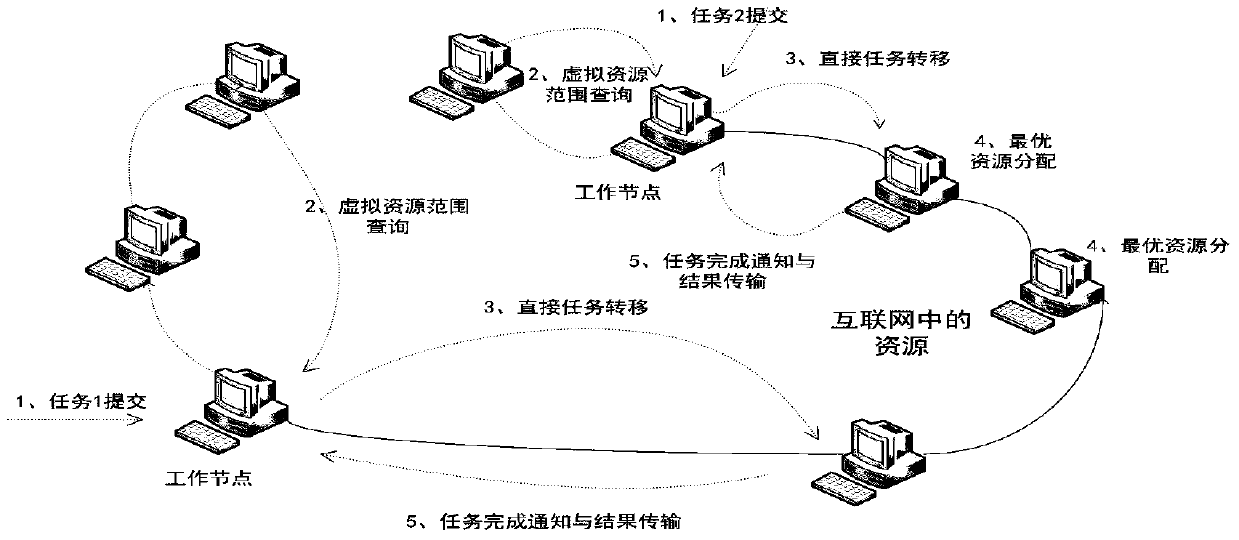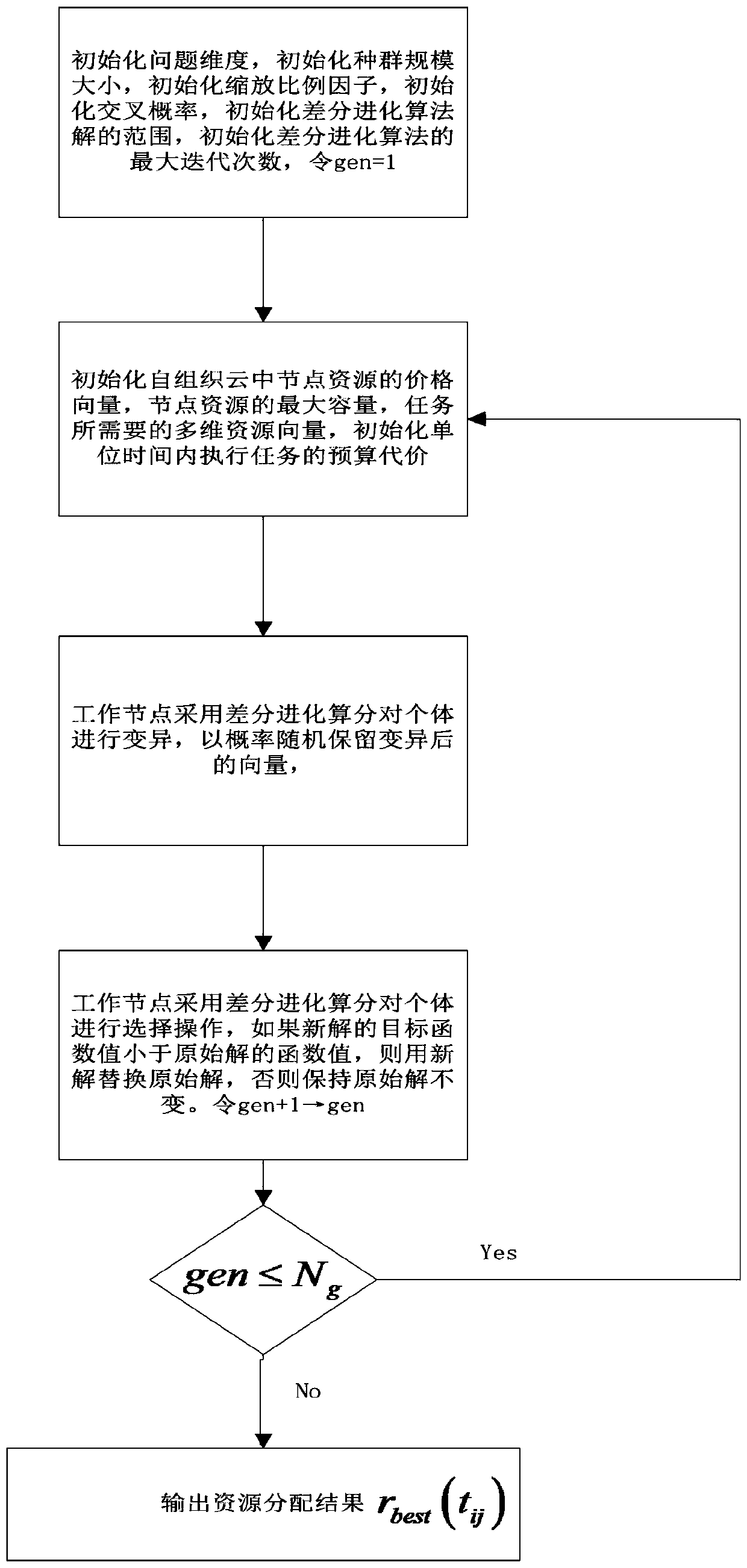Resource allocation method based on budget constraints to minimize execution time of self-organized cloud tasks
A technology for task execution and resource allocation, which is applied in the field of computer networks, can solve problems such as not considering user task execution time and failing to meet user resource usage needs in a timely manner.
- Summary
- Abstract
- Description
- Claims
- Application Information
AI Technical Summary
Problems solved by technology
Method used
Image
Examples
Embodiment 1
[0049] The present invention is based on a budget-limited self-organizing cloud task execution time minimization resource allocation method, and the steps are as follows:
[0050] Step 1, self-organizing the working nodes in the cloud to collect the available resources of each physical node.
[0051] The working nodes in the ad hoc cloud collect the available resources of each physical node, wherein there are 2000 nodes in the ad hoc cloud, and the available resources of each physical node include CPU computing resources and disk read and write speed resources.
[0052] Step 2, self-organizing cloud worker nodes collect user task requests.
[0053] The working nodes in the self-organizing cloud collect the user's task requests. The task requests include the multi-dimensional resource vector required by each task and the budget cost per unit time for each task execution. The CPU computing resources required by the two tasks in the self-organizing cloud are [ 6, 8], unit, Gflop...
Embodiment 2
[0061] Step 1, self-organizing the working nodes in the cloud to collect the available resources of each physical node.
[0062] The working nodes in the self-organizing cloud collect the available resources of each physical node, wherein there are 12,000 nodes in the self-organizing cloud, and the available resources of each physical node include CPU computing resources, disk read and write speed resources and network bandwidth resources.
[0063] Step 2, self-organizing cloud worker nodes collect user task requests.
[0064] The working nodes in the self-organizing cloud collect the user's task requests. The task requests include the multi-dimensional task vector required by each task and the budget cost per unit time for each task execution. The CPU computing resources required by the two tasks in the self-organizing cloud are [ 5, 7], unit, Gflops, the disk read and write speed resources required by the two tasks in the self-organizing cloud are [3, 2], the unit, Gbps, and...
PUM
 Login to View More
Login to View More Abstract
Description
Claims
Application Information
 Login to View More
Login to View More - R&D
- Intellectual Property
- Life Sciences
- Materials
- Tech Scout
- Unparalleled Data Quality
- Higher Quality Content
- 60% Fewer Hallucinations
Browse by: Latest US Patents, China's latest patents, Technical Efficacy Thesaurus, Application Domain, Technology Topic, Popular Technical Reports.
© 2025 PatSnap. All rights reserved.Legal|Privacy policy|Modern Slavery Act Transparency Statement|Sitemap|About US| Contact US: help@patsnap.com



